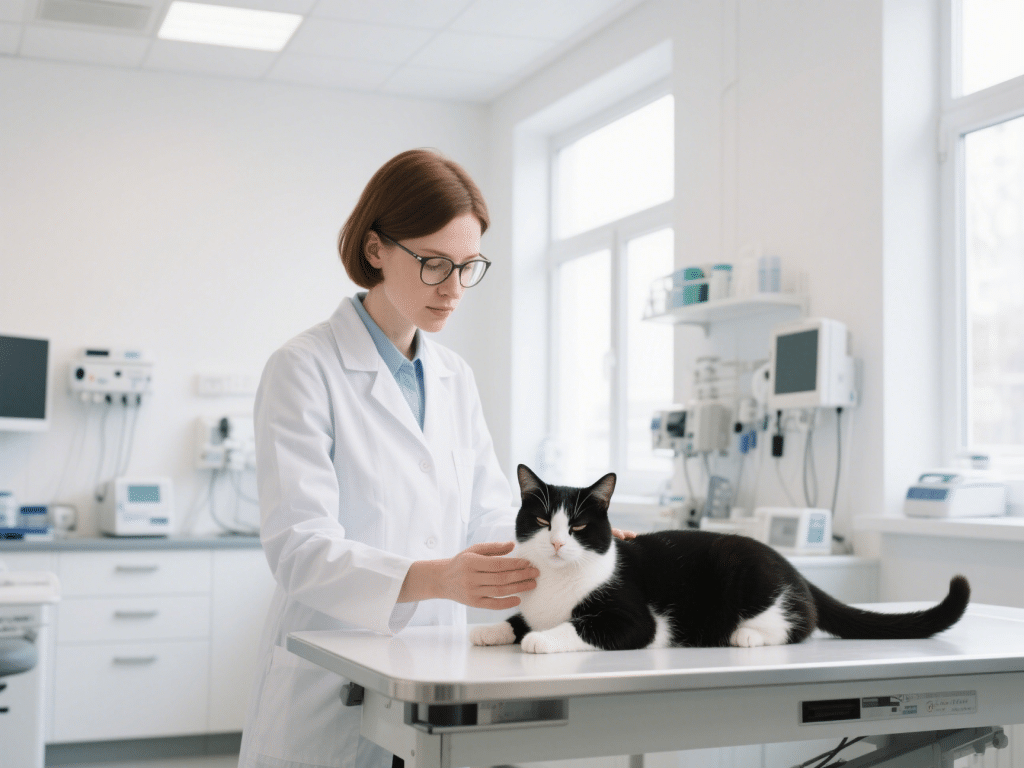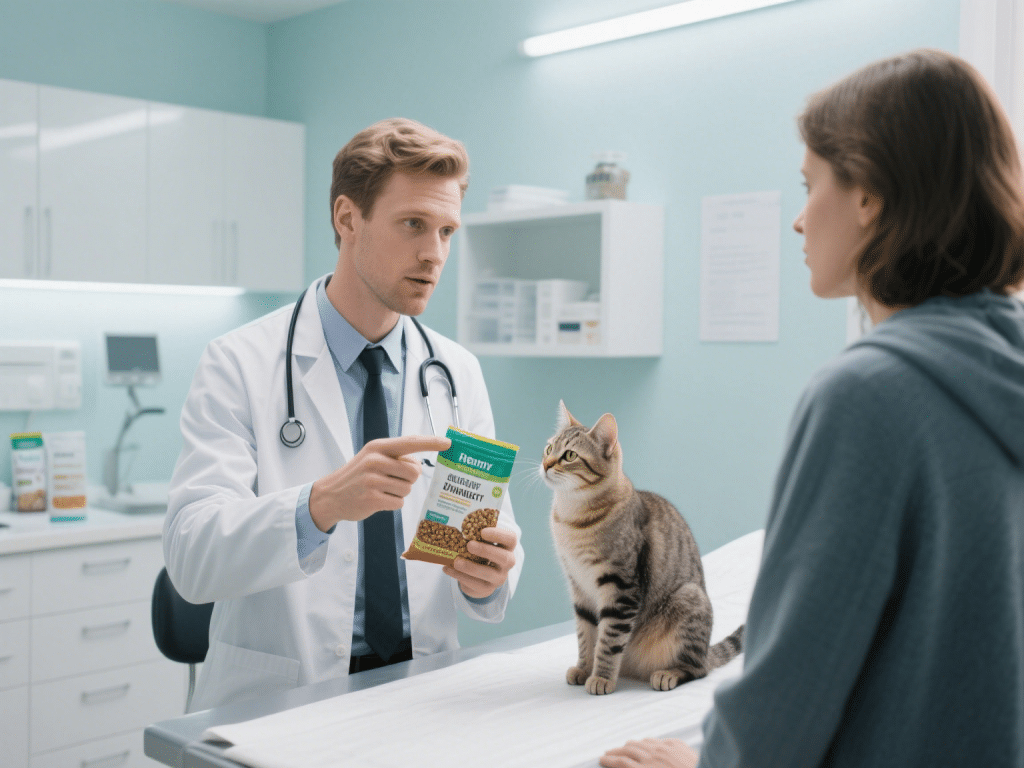Introduction
Cat allergies affect many households: even though felines can trigger allergic reactions in sensitive individuals, owners still want their cats to live free of discomfort. This guide outlines practical, veterinarian-approved treatments to manage feline allergies—from identifying symptoms and obtaining a proper diagnosis to implementing targeted therapies—so that your kitty stays relaxed and you maintain a harmonious relationship with your pet.
Understanding Cat Allergies
Allergies in cats arise when the immune system overreacts to otherwise harmless substances (allergens). Common triggers include:
Pollen and Dust Mites: Environmental allergens that cling to a cat’s coat and skin.
Flea Saliva: Even a single flea bite can provoke intense itching or dermatitis.
Food Ingredients: Certain proteins (e.g., beef, chicken, dairy) may cause gastrointestinal upset or skin inflammation.
Unlike humans, cats can suffer from atopic dermatitis, asthma-like symptoms, and chronic ear or skin infections due to allergic reactions. Understanding the specific allergen is essential for selecting the most effective treatment plan.
Recognizing Symptoms
Early detection allows for prompt intervention. Typical signs of allergic disease in cats include:
Itching and Scratching: Excessive grooming, biting at paws, or rubbing face on furniture.
Hair Loss and Red Patches: Localized alopecia, erythema, or scabs on flanks, belly, or underarms.
Persistent Ear Problems: Recurrent ear infections, head shaking, and earwax buildup.
Respiratory Distress: Wheezing, coughing, or open-mouth breathing (analogous to asthma).
Chronic Skin Infections: Bacterial or yeast overgrowth secondary to constant scratching.
If you notice any combination of these signs persisting for more than two weeks, scheduling a veterinary appointment is highly recommended.
Diagnosis: Confirming the Allergen
A veterinarian will conduct a thorough workup to pinpoint the underlying cause:
Physical Examination: Checking for skin lesions, ear debris, and respiratory sounds.
Skin-Prick or Intradermal Testing: Identifying environmental allergens by injecting small amounts under the skin and observing reactions.
Serology (Allergen-Specific IgE): Blood tests to measure antibody levels against common allergens.
Food Trial: Eliminating suspect proteins and reintroducing them one at a time over 8–12 weeks to reveal food sensitivities.
Flea Control Assessment: Inspecting coat for fleas or flea dirt, even if no fleas are seen.
Accurate diagnosis differentiates between flea allergy dermatitis, atopic dermatitis, or food allergies, guiding the subsequent treatment plan.
Treatment Options
1. Environmental Management
Flea Prevention: Use veterinarian-approved topical or oral flea preventives year-round. Even a single bite may provoke an allergic response.
Air Filtration: High-efficiency particulate air (HEPA) filters reduce airborne pollen and dust mites in the home.
Regular Grooming: Wiping your cat’s coat with hypoallergenic, veterinarian-recommended wipes twice weekly helps remove airborne allergens before they settle into the skin.
Dust Control: Wash bedding frequently in hot water, use dust-mite–resistant covers on furniture, and vacuum carpets with a HEPA-equipped vacuum.
2. Pharmacological Therapies
a. Antihistamines
Cetirizine (10 mg once daily): Many cats tolerate low-dose cetirizine well to reduce mild pruritus; however, response varies.
Diphenhydramine (1–2 mg/kg twice daily): Can provide temporary relief; may cause drowsiness.
Note: Always consult your veterinarian before administering human medications—dosing must be adjusted for feline metabolism.
b. Corticosteroids
Prednisolone (0.5–1 mg/kg once daily and tapered): Rapid relief of severe itching and inflammation.
Pros: Fast-acting, highly effective for acute flares.
Cons: Long-term use may lead to weight gain, diabetes, or skin thinning.
c. Immunomodulatory Drugs
Cyclosporine (5 mg/kg once daily): Modulates immune response to decrease hypersensitivity; often used for chronic atopic dermatitis.
Oclacitinib (Apoquel®, off-label dosing for cats): Although not officially approved in felines, some dermatologists prescribe low-dose oclacitinib for severe pruritus unresponsive to other treatments.
Important: Monitor bloodwork (kidney and liver function) at least every 6 months when using immunosuppressants.
3. Allergen-Specific Immunotherapy (Hyposensitization)
Customized Allergy Shots or Sublingual Drops: After identifying specific environmental allergens via testing, a veterinary dermatologist can formulate injections or oral drops containing trace amounts of the allergen.
Administration Protocol: Typically starts with low doses injected weekly, gradually increasing over 3–6 months, then maintaining monthly injections.
Advantages: Can reduce long-term reliance on steroids and antihistamines.
Limitations: Requires strict owner compliance; full effect may take 6–12 months.
4. Hypoallergenic Diets
Novel-Protein Diets: Diets containing proteins your cat has never eaten (e.g., kangaroo, venison) to minimize food antigen exposure.
Hydrolyzed Protein Diets: Proteins broken into microscopic fragments so the immune system no longer recognizes them as allergens.
Implementation: Feed exclusively the prescribed diet for 8–12 weeks; avoid treats, flavored medications, and human food.
Outcome Measurement: Improvement in itching or gastrointestinal symptoms confirms a food allergy.
5. Topical and Bathing Therapies
Oatmeal-Based Shampoos: Provide soothing relief for inflamed skin; use lukewarm water and gentle massage.
Medicated Sprays (e.g., hydrocortisone aceponate): Local anti-inflammatory effect on focal lesions; apply 1–2 cm from the skin.
Aloe Vera–Based Conditioners: Help restore skin barrier function; use once or twice weekly.
6. Alternative and Supportive Therapies
Omega-3 Fatty Acid Supplements: High-quality, veterinarian-formulated omega-3s can reduce inflammation and support skin health.
Probiotics: Certain probiotic strains (e.g., Enterococcus faecium) may improve gut-skin axis health for food-allergic cats.
Acupuncture: Some veterinary clinics offer acupuncture to diminish pruritus when combined with conventional therapy.
Monitoring and Follow-Up
Regular Checkups: Schedule follow-up visits every 3–6 months to assess symptom control, especially if on long-term immunosuppressive therapy.
Owner Journal: Record daily scratching intensity, frequency, diet changes, and environmental modifications to share with your veterinarian.
Skin Rechecks: If signs recur, revisit allergen testing or adjust medication dosages; allergies can change over time.
When to Seek Emergency Care
While allergies are typically chronic and manageable, immediate veterinary attention is warranted if you observe:
Severe Respiratory Distress: Open-mouth breathing or blue-tinged gums/capillary refill time over two seconds.
Acute Facial Swelling: Sudden swelling of eyelids, muzzle, or neck indicating possible anaphylaxis.
Extreme Lethargy or Collapse: May signal a systemic allergic reaction or secondary infection.
Conclusion
A multi-pronged strategy—combining environmental control, accurate diagnosis, targeted pharmacological or immunotherapy protocols, and supportive nutritional measures—allows most cats to live comfortably despite allergies. By collaborating closely with your veterinarian, maintaining vigilant home monitoring, and adapting treatments as needed, you can significantly reduce your cat’s itchiness, prevent secondary infections, and improve overall quality of life.










Comments on " Effective Cat Allergy Treatments to Keep Your Kitty Comfortable" :